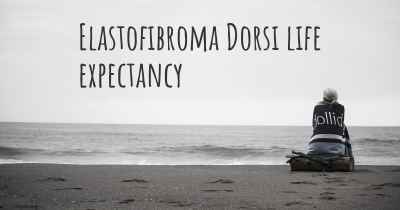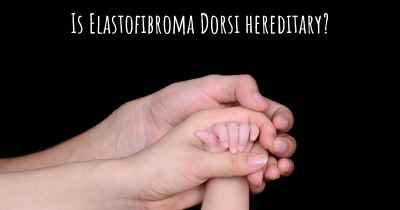What is the history of Elastofibroma Dorsi?
When was Elastofibroma Dorsi discovered? What is the story of this discovery? Was it coincidence or not?

Elastofibroma dorsi is a rare benign soft tissue tumor that primarily affects the connective tissue in the back. It was first described by Jarvi and Saxen in 1961, and since then, numerous cases have been reported in medical literature. The name "elastofibroma" refers to the composition of the tumor, which consists of a combination of elastic fibers and fibrous tissue.
Historical Background:
The history of elastofibroma dorsi dates back to the early 20th century when similar cases were reported, but it was not until 1961 that it was officially recognized as a distinct entity. Jarvi and Saxen, Finnish pathologists, published the first comprehensive study on elastofibroma dorsi, describing it as a "tumor-like lesion" characterized by the accumulation of elastic fibers and fibrous tissue in the subscapular region of the back.
Early Studies and Classification:
Following the initial description, further studies were conducted to better understand the nature and characteristics of elastofibroma dorsi. These studies aimed to classify the tumor, determine its prevalence, and identify potential risk factors.
One of the early studies by Jarvi and Saxen in 1972 examined 170 cases of elastofibroma dorsi, providing valuable insights into its clinical features and histopathological characteristics. They found that the tumor predominantly affected elderly women, with a peak incidence in the seventh and eighth decades of life. The study also highlighted the bilateral nature of elastofibroma dorsi, with 70% of cases occurring on both sides of the back.
Prevalence and Risk Factors:
Elastofibroma dorsi is considered a relatively rare tumor, with an estimated prevalence ranging from 0.2% to 3.5% in the general population. It is more commonly observed in older individuals, particularly women over the age of 50. The exact cause of elastofibroma dorsi remains unknown, but several risk factors have been proposed.
One of the main risk factors associated with elastofibroma dorsi is repetitive mechanical stress. It has been suggested that chronic friction between the scapula and the underlying muscles may contribute to the development of the tumor. This hypothesis is supported by the higher prevalence of elastofibroma dorsi in individuals engaged in activities that involve repetitive shoulder movements, such as manual laborers and athletes.
Clinical Presentation and Diagnosis:
Elastofibroma dorsi is often asymptomatic and discovered incidentally during routine medical examinations or imaging studies. However, in some cases, it can cause pain, discomfort, or restricted shoulder movement. The tumor typically manifests as a slow-growing, non-tender mass located between the lower scapula and the thoracic wall.
Diagnosing elastofibroma dorsi can be challenging due to its rarity and nonspecific symptoms. Imaging techniques such as X-rays, ultrasound, and magnetic resonance imaging (MRI) are commonly used to visualize the tumor and assess its characteristics. However, definitive diagnosis is achieved through histopathological examination of a tissue sample obtained via biopsy or surgical excision.
Treatment and Prognosis:
As elastofibroma dorsi is a benign tumor, treatment is primarily focused on relieving symptoms and improving quality of life. In most cases, conservative management is recommended, including pain management, physical therapy, and activity modification. Surgical intervention may be considered in cases where the tumor causes significant pain, functional impairment, or cosmetic concerns.
The prognosis for elastofibroma dorsi is generally favorable, with a low recurrence rate following surgical excision. However, long-term follow-up is recommended to monitor for any potential recurrence or complications.
Conclusion:
Elastofibroma dorsi is a rare benign soft tissue tumor that primarily affects the connective tissue in the back. It was first described in 1961 and has since been the subject of numerous studies. Although its exact cause remains unknown, repetitive mechanical stress is considered a significant risk factor. The tumor is typically asymptomatic but can cause pain and restricted shoulder movement in some cases. Diagnosis is achieved through imaging and histopathological examination. Treatment focuses on symptom management, and surgical intervention may be considered in certain situations. Overall, the prognosis for elastofibroma dorsi is favorable, with a low recurrence rate.








